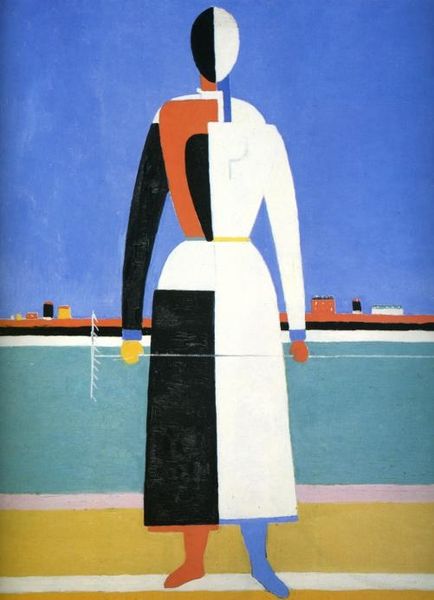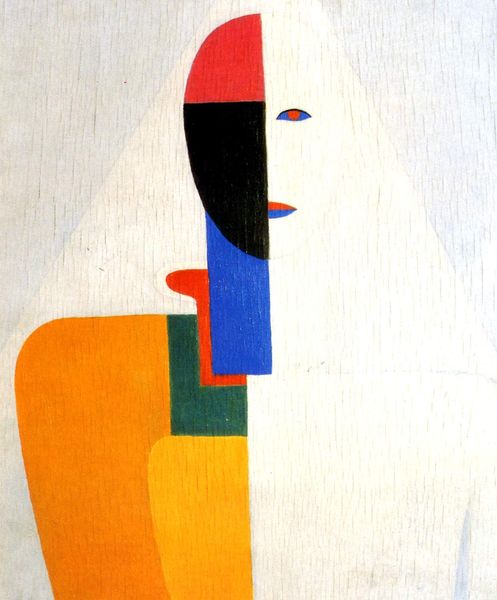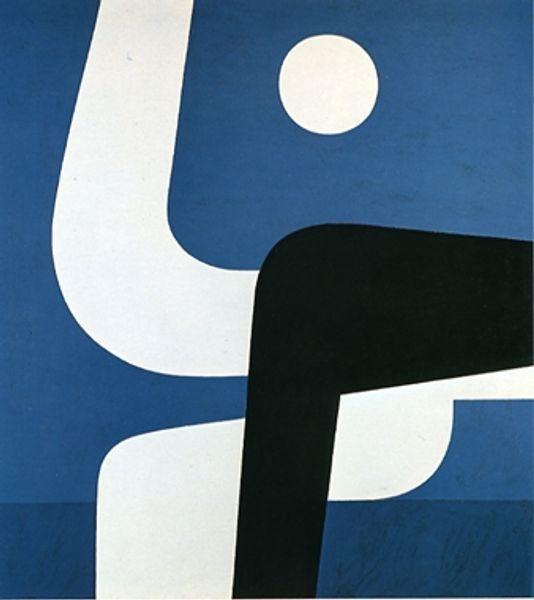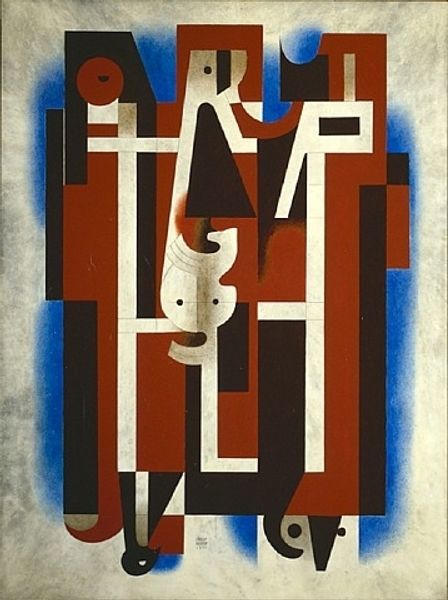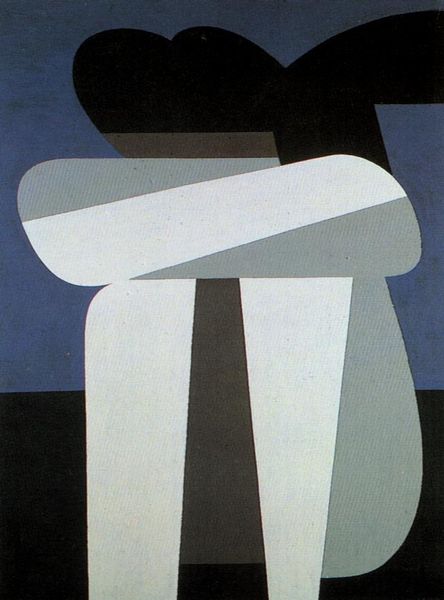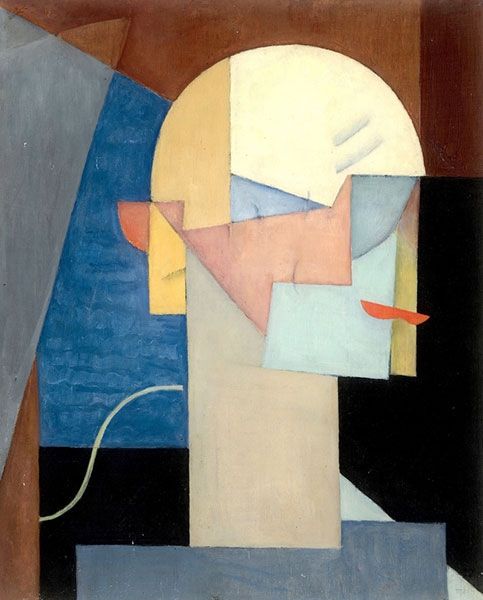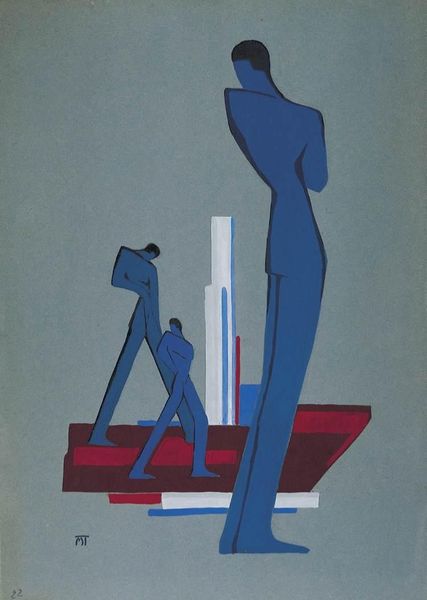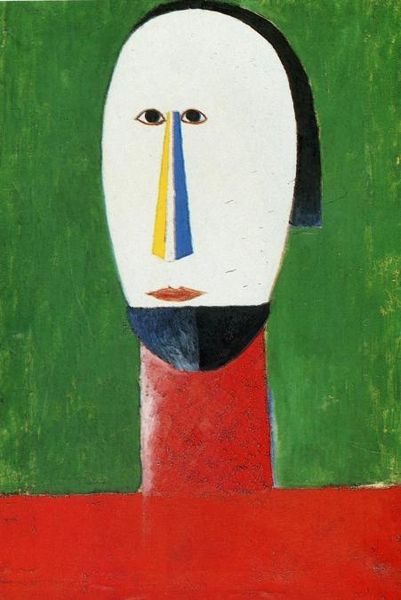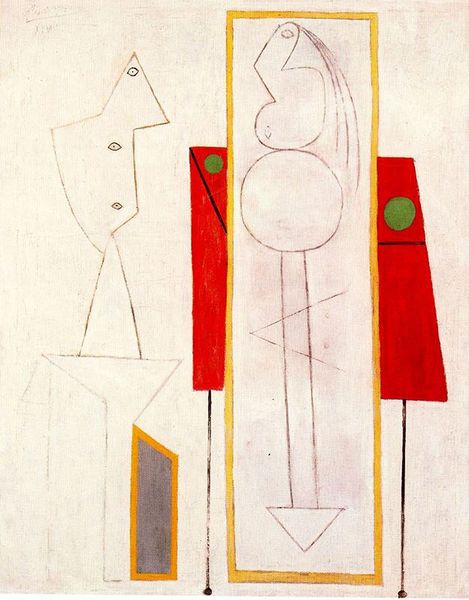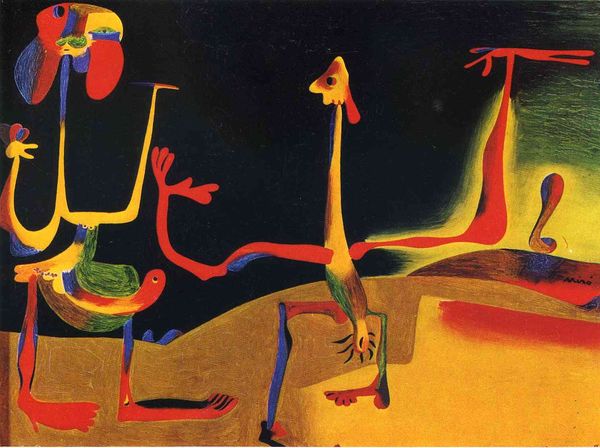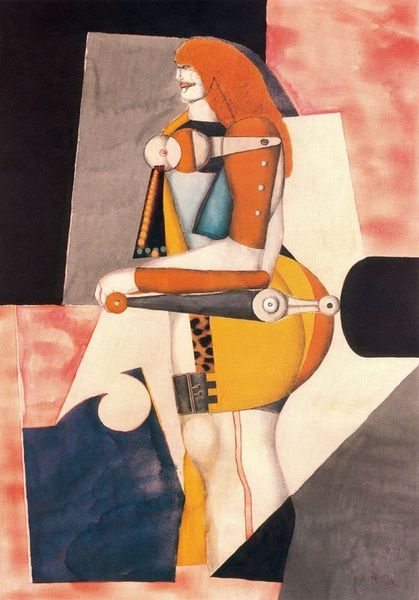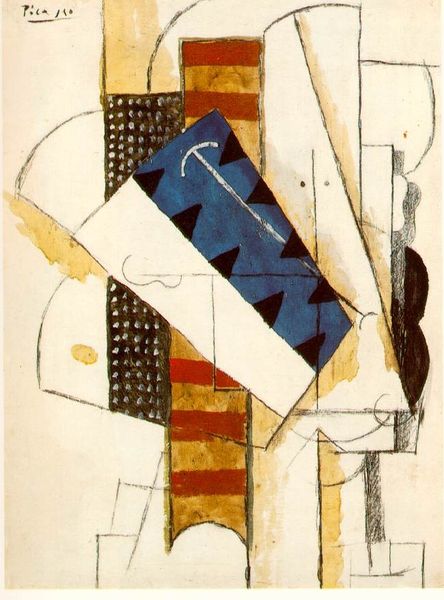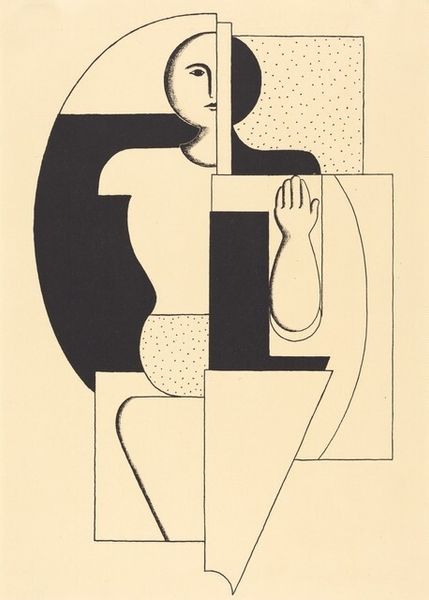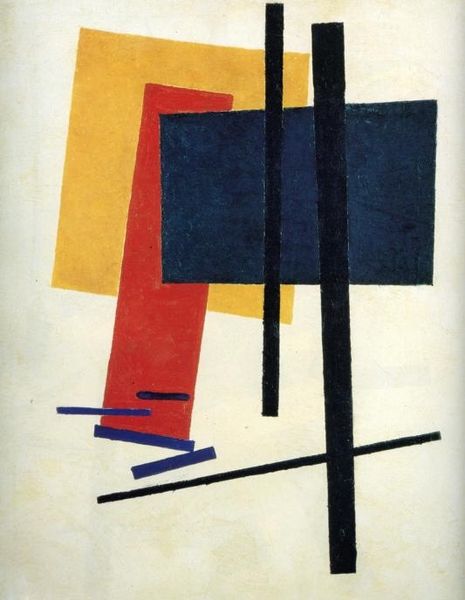
Dimensions: 46 x 37 cm
Copyright: Public domain
Editor: So, this is Kazimir Malevich's "Torso," painted in 1932. It’s an oil painting, and honestly, it strikes me as both stark and strangely… human. I'm drawn to the limited color palette. How do you interpret this work, focusing on its visual elements? Curator: The essence of this work lies in its simplification of form. Notice how Malevich uses geometric shapes—ovals, rectangles, and triangles—to construct a figure. The stark contrast between the white, blue, and red segments commands immediate attention. It’s Suprematism distilled, the pure feeling in creative art manifested through color and shape. Consider how the asymmetry contributes to a sense of dynamism. Does this asymmetry evoke tension or balance in your perspective? Editor: I see the tension now that you mention it. The left side is heavy with that large blue shape, and the right feels almost… frail in comparison. I had assumed there was some attempt at balance. Curator: Balance isn't necessarily the objective here. The interplay of these elements disrupts visual equilibrium. Observe also the texture of the paint application; how does the materiality affect your perception? Editor: I didn't even notice the texture initially, I was so focused on the colour contrasts and shapes. Now I can see the brushstrokes adding another dimension to an otherwise quite smooth surface. Curator: Precisely. These details contribute to the complex interplay of form and materiality which invite a continuous, evolving observation. The reduction of the figure to its most basic geometric components urges us to see beyond representation. Editor: Thank you, this way of understanding artworks gives me a lot to think about, and it's great to notice new details. Curator: You're welcome, recognizing and decoding these signs unlocks deeper understanding.
Comments
No comments
Be the first to comment and join the conversation on the ultimate creative platform.
